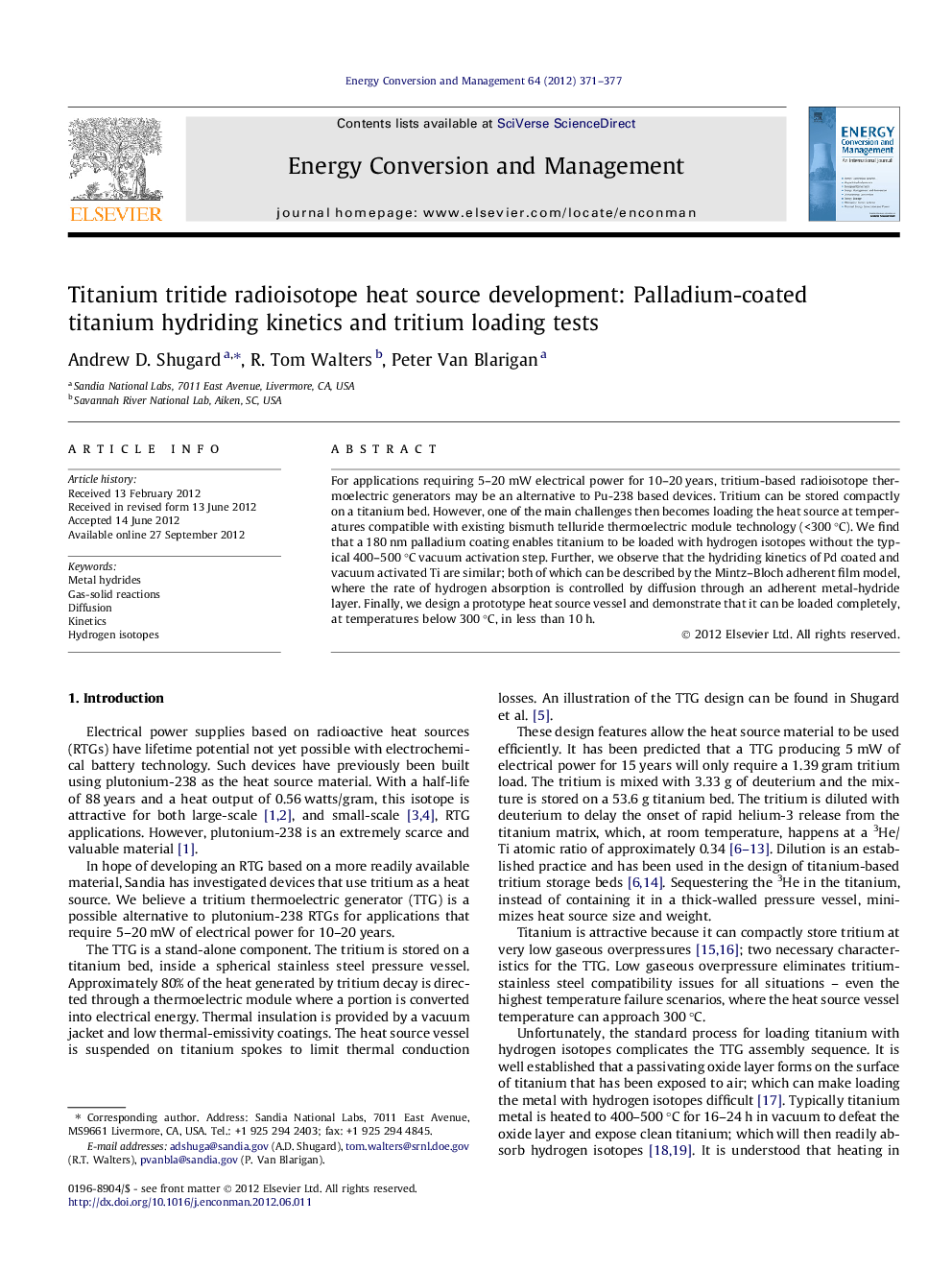| کد مقاله | کد نشریه | سال انتشار | مقاله انگلیسی | نسخه تمام متن |
|---|---|---|---|---|
| 761140 | 1462898 | 2012 | 7 صفحه PDF | دانلود رایگان |

For applications requiring 5–20 mW electrical power for 10–20 years, tritium-based radioisotope thermoelectric generators may be an alternative to Pu-238 based devices. Tritium can be stored compactly on a titanium bed. However, one of the main challenges then becomes loading the heat source at temperatures compatible with existing bismuth telluride thermoelectric module technology (<300 °C). We find that a 180 nm palladium coating enables titanium to be loaded with hydrogen isotopes without the typical 400–500 °C vacuum activation step. Further, we observe that the hydriding kinetics of Pd coated and vacuum activated Ti are similar; both of which can be described by the Mintz–Bloch adherent film model, where the rate of hydrogen absorption is controlled by diffusion through an adherent metal-hydride layer. Finally, we design a prototype heat source vessel and demonstrate that it can be loaded completely, at temperatures below 300 °C, in less than 10 h.
► Investigated palladium coating as method for activation-free titanium hydriding.
► Palladium promotes activation-free titanium hydriding between 25 and 300 °C.
► Pd coated Ti has essentially identical hydriding kinetics as vacuum activated Ti.
► Prototype heat source vessels designed and loaded with D2 and T2 gas mixtures.
Journal: Energy Conversion and Management - Volume 64, December 2012, Pages 371–377